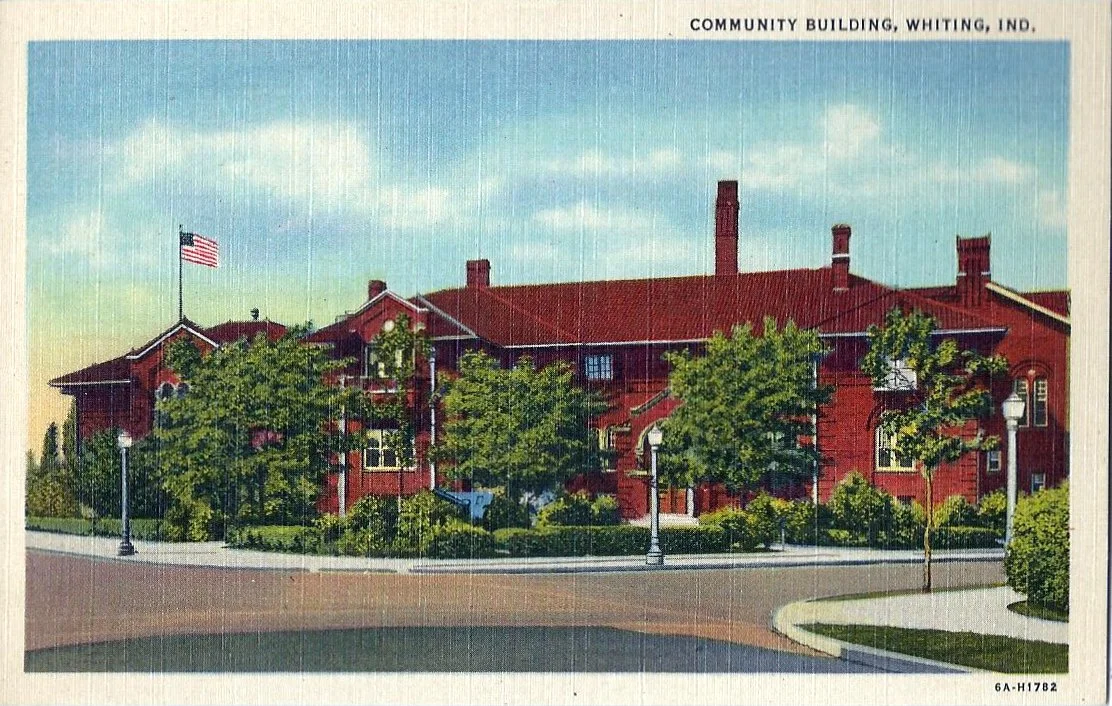A 1955 photo from the Times-Grafic, which shows the bowling alley that was once in the Community Center. You can hear stories of the bowling alley from Al Koch, a former pin setter at the alley, on the tour of the Community Center on Saturday, September 28.
Imagine how different downtown Whiting would look if the Community Center had been built on 119th Street. It almost happened.
Instead, the Community Center has been a fixture on Clark Street since 1923, and thousands of Whiting-Robertsdale residents spent at least a portion of their lives in the building. But as familiar as it is, there are portions of the Community Center that many of us have never seen, and portions that haven’t been seen in years.
This Saturday, however, you will have a chance to reacquaint yourself with the building. The Whiting Family YMCA is opening its doors for a behind the scenes look at the Community Center. You will be able to see the 800-seat auditorium, gym, pool, Memorial Room, caretaker’s apartment, underground tunnels, and relive memories of the bowling alley.
At the same time, the city of Whiting will hold an “Historic Flea Market,” giving guests to the Community Center an opportunity to buy historic street bricks, street signs, the old Whiting Park (WP) posts, original bowling lane pieces, and more. All revenue from the sale of these items will go toward a fund for the development of a Whiting History Museum.
Tour times are available at 10 A.M. to 11:50 A.M., and from noon to 1:50 P.M. You must register in person at the YMCA or at crymca.org. The cost is $20 per person, with all proceeds from the tours going to the Financial Assistance Program of the YMCA, which provides funds that give everyone a chance to use the facilities of the YMCA in Whiting regardless of their financial situation.
The Memorial Room is one of the least used rooms in the Community Center, and one of the best preserved. It will be open for this Saturday’s guided tour of the building.
As for the Community Center almost being built on 119th Street, the story starts in 1919, when members of the Owls Club approached Standard Oil for help in building a new facility that would provide a space for the club’s athletic programs and other activities. A large portion of the Owls Club consisted of the most promising young men in Standard Oil and in the city’s business and political community. They were able to persuade the company to provide financial support, but the company felt it would be better to build a facility for the community, not for the Owls Club. The Owls Club members agreed, and played an important role in getting the Community Center built.
Standard Oil then began searching for land on which to build the proposed facility. Their first choice was on the north side of 119th Street, between Central and LaPorte Avenues. They entered into negotiations with the owners, but pulled out of the talks when it became obvious that the owners were not willing to sell at a price Standard Oil found acceptable.
This is the site where the Whiting Community Center now stands. There were twenty small cottages here in 1923, on what was then called Short Street. All were torn down to make room for the Community Center.
Instead, the company purchased land owned by the Forsythe family on what was then called Short Street. A series of twenty small cottages lined that street. Across the street was a blacksmith shop and the city barn. All were demolished to make room for the Community Center, and the new Methodist Church across the street. Both buildings still stand, and the section of 119th Street that could have been the site of the Community Center continues to be the home of a drug store on one end, a bank on the other, and several businesses in between. It could have looked very different, if only the price had been right.

